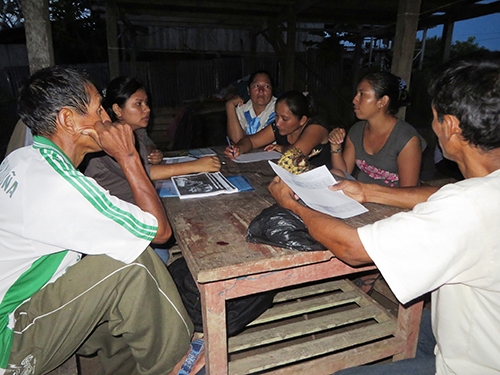SPRING’s curated collection of useful resources to design, implement, and monitor nutrition behavior change programs

This library includes resources from SPRING's work to help social and behavior change (SBC) practitioners design, implement, and monitor effective SBC interventions for nutrition. If you are a nutrition program manager, these resources can also help you to gain a deeper understanding of what applying SBC approaches looks like operationally. Each resource includes a brief explanation on its purpose and how it can be used, along with a file that can be downloaded and adapted.
Most of the resources in this library are internal process documents. For more formal guidance and tools, see SPRING’s work catalyzing social and behavior change for nutrition and how to do at-scale nutrition SBC within the context of USAID’s Multi-sectoral Nutrition Strategy.
Steps for Developing an SBC Strategy
A well-designed SBC strategy guides the use of resources for effective SBC efforts, whether at project or national level. An SBC strategy is a means to an end—the time spent on developing an SBC strategy should not detract from the time spent on actual SBC activities, but a good SBC strategy can also help achieve buy-in from project leadership and other key stakeholders, ultimately improving the quality and effectiveness of SBC efforts.
The resources included in this library are presented in the context of the steps of a typical process for desigining an SBC Strategy. Click on the title below to review the steps or go straight to the SBC strategy resource categories further down.
Typical Process for Designing Social and Behavior Change Strategies
Below is a list of typical steps for developing a strategy. Developing an SBC strategy is an iterative process - a team will rarely begin at point one and proceed in order down a list. A good planning process often will jump across different steps in different sequences until the strategy is completed.
1. Identify behaviors related to project objectives
It is important to begin with evidence-based behaviors related to the project objectives. For example, a project aimed at reducing anemia may prioritize the use of iron supplements or deworming medication.
2. Gather available data
To identify priority behaviors and appropriate social behavior change communication (SBCC) approaches, program designers need to understand the causes of malnutrition in the local context, and the needs of specific populations. This includes:
- A review of interventions currently being implemented in the country or project area that might directly or indirectly affect nutrition.
- Formative research to identify the factors that discourage or encourage key behaviors, design the overall strategy, and develop messages (where appropriate).
3. Draft the strategy
A comprehensive SBC strategy usually includes the following elements:
- Clearly defined and prioritized behaviors that will be promoted. Evidence confirms that SBCC interventions are most effective when they promote a limited number of “doable” actions at one time.
- Project interventions to bring about sustained changes in priority behaviors. These should be based on a clear, logical understanding of how the interventions will lead to outputs; outcomes; and, eventually, impacts.
- A program monitoring plan that includes specific, measurable, achievable, relevant, and time-bound (SMART) indicators.
- Clearly defined target populations, including the priority group(s) of people expected to adopt and maintain the priority behaviors, and the groups of people that influence the priority group, such as partners, families, peers, or local leaders.
- A communication plan that includes a mix of strategies, channels, and delivery platforms and effective training resources, job aids, media, and materials for engaging the proposed priority group.
4. Further refine project activities
Consider using both communication and non-communication activities to reduce barriers and build on enablers for action. Most effective SBC strategies include a mix of communication and non-communication activities, such as—
- Interpersonal communication, including—but not limited to—facility-based counseling, agriculture extension, home visits, and support groups
- Community mobilization, including fairs, contests, and dialogues, as well as community radio and video production and dissemination events
- Social marketing of technologies or commodities (e.g., home water treatment or fortified foods)
- Mass media campaigns, such as television dramas, radio broadcasts, or print media
- Systems strengthening, to improve access to and quality of goods and services)
- Behavioral economics, that take into account the psychology associated with making choices and the conscious and unconscious mental processes that drive decisions
- Advocating social, policy, or financial incentives or disincentives to behavior change, such as workplace environments that are friendly to breastfeeding or taxing sugary beverages to discourage consumption
- Advocacy conducted at the community level, up to the national level, among decision-makers and policymakers